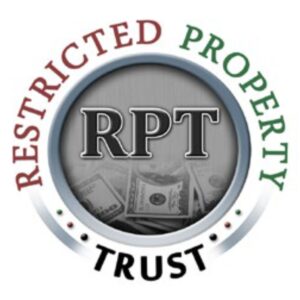Effective Asset Management: The Role of Restricted Property Trusts
Effective Asset Management: The Role of Restricted Property Trusts
Blog Article

In the current financial climate safeguarding your assets from possible threats is more crucial than ever. Restricted Property Trust have become a powerful tool for individuals who want to protect their wealth while meeting the financial goals they have set for themselves.
Understanding Restricted Property Trusts
Restricted Property Trusts are financial instruments designed to offer an excellent level of protection for assets. Through the transfer of property or investments into an RPT, individuals can shield their wealth from risky situations, such as legal claims, creditor actions and financial risks. The most important feature in an RPT is its ability to set specific limitations regarding how assets can be managed, used or distributed, thereby providing an additional layer of protection.
Effective Uses of Restricted Property Trusts
1. Protecting Against Creditors The primary benefits of an RPT is it's ability to safeguard your assets from being harmed by creditors. If assets are put into an RPT, they are distinct from the personal estate. This separation is a safeguard in the event of an action or dispute over finances, the assets within the trust are generally shielded from liquidation or seizure.
2. Estate planning and Legacy Conservation: RPTs play a significant function in estate planning by aiding in the transfers of wealth. They make sure that wealth distribution is according to the individual's wishes, minimizing potential conflicts among the heirs, and also reducing estate taxes. The structured nature of an RPT permits precise planning that is in line with long-term objectives and concerns about legacy.
3. Tax Efficiency: Restricted property trusts may offer potential tax benefits, dependent on their structure and jurisdiction. For instance certain RPTs may qualify to receive tax benefits that are favorable which includes tax deferral or reduction. This could improve the effectiveness of your financial plan and offer additional benefits to asset management.
4. Controlling Assets By imposing specific restrictions on how assets within the RPT are used, you retain the control over their management and distribution. This is particularly beneficial in ensuring that assets are utilized in a manner that is compatible the financial objectives as well as your personal values.
Implementing a Restricted Property Trust
Establishing the RPT requires careful planning and consulting with experts in legal and financial matters. The process includes drafting the trust agreement, choosing a trustee, and defining the terms and restrictions that will apply to the trust. It is crucial to customize the RPT to your individual requirements and objectives, while ensuring that it provides the desired level of security and flexibility.
Potential Considerations
While RPTs offer significant benefits, they also come with certain issues. Setting up the RPT and keeping it in place could be complicated and could result in more expense than other strategies for asset protection. It is crucial to consider the administrative responsibilities and legal implications prior to agreeing to this approach. Working with knowledgeable advisors can aid in the process and ensure the trust is properly managed.
Conclusion
Restricted Property Trusts provide a effective solution for protecting assets and increasing security of finances. Utilizing the strategic benefits of RPTs, individuals can protect their wealth from potential dangers, improve their estate planning and achieve long-term financial goals. If you're looking to protect their wealth and manage the complexities of wealth management exploring the utilization the use of Restricted Property Trust (RPTs) is a valuable way to achieve lasting financial stability. Report this page